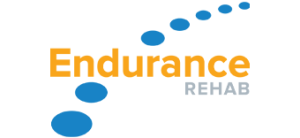ASTYM – GOOD FOR WHAT AILS YOU
ASTYM – GOOD FOR WHAT AILS YOU
Written by Nathan Koch
In my work as a physical therapist, I encounter athletes of all stripes who are limited by soft-tissue injuries. Plantar fasciitis, hamstring strain, patellar tendinosis – these are just a few diagnoses of injuries that can stop an athlete cold, or at least limit their effectiveness in and enjoyment of their activity. Triathletes are particularly susceptible to overuse injuries dealing as they do with the high volume hours of training necessitated by their sport.
While I use many therapies in my practice to heal patients, there is one treatment system I have found to be excellent and effective in healing soft-tissue injuries. ASTYM treatment is a cutting-edge therapy system that really does work. It is evidence-based, with proven and reliable outcomes I trust.
I work with many coaches, personal trainers and doctors who also believe in the ASTYM system. Joe Friel, who has coached many elite-level athletes to personal records, often sends injured athletes in to receive ASYTM therapy. He says: “My injured athletes have responded very well to ASTYM treatment. I like how it gets them back into training more quickly than other methods I’ve seen used in the past.”
Soft-tissue injury typically goes something like this: An athlete increases her running miles and starts to notice that a hamstring becomes irritated. She stretches, maybe uses ice or ibuprofen, but the discomfort continues. Being an athlete, she continues to train through her discomfort. Some days are better than others, some days are worse, but the hamstring never really feels wonderful. After a while, the hamstring becomes the limiting factor in her training and her success as an athlete. In worst-case scenarios, the athlete tells herself that she is too old, or too injured to continue running, and gives up the sport she loves.
One age-grouper triathlete I worked with was in this exact painful physical and emotional state. Carlos Mendoza, 42, was considering retiring from the sport of triathlon because of his discomfort with IT band and hamstring issues. After receiving ASTYM treatment, he went on to a PR at the SOMA Half Ironman, placing second in his age group. He says, “ASTYM works. I recommend it to any athlete who is dealing with endurance training injuries.”
Physiologically, what happens when injury occurs is this: The athlete increases her training, and her hamstring – for one reason or another – gets irritated. The body first causes inflammation to happen around the muscle and, as she continues running, it starts to lay down scar tissue, trying to heal itself.
Scar tissue, if you look at it under a microscope, is disorganized and crazy – it looks like steel wool. Healthy tissue looks like dried spaghetti – it lines up together in tidy, parallel lines. Scar tissue is by nature contractile: it contracts down upon itself over time. In our hypothetical runner’s case, this would mean that her injured hamstring would get shorter and less flexible the longer she ran with her untreated injury.
Restricted motion is another by-product of soft-tissue scarring. The layers of skin, fascia and muscle adhere to one another, and develop a grainy, gritty texture easily felt by patients. These adhesions have poor blood flow, restrict movement, and can be precursors to injury.
What ASTYM therapy does is jump-start the healing process of the body. The system is a three-tiered process. After evaluating the patient, a certified ASTYM clinician performs a hands-on treatment of the injured area. We spread a heavy cream over the skin, and use specially-designed tools in firm strokes, working not just the injury, but also surrounding areas. The patient can feel the adhesions being mobilized underneath the skin, often identified as a “crunching” sound.
What happens on a cellular level is that the tools are causing microtrauma in the tissue. The body’s response to the microtrauma is to start the healing cascade: it sends in collagen and starts to lay down fresh tissue. The old scar tissue is resorbed into the body as part of this healing process.
A critical part of the ASTYM system rests in the hands of the patients themselves. The second and third parts of the treatment system are specific stretches and strengthening exercises that tell the body to lay down new tissue in an organized fashion. Also – and this is crucial to the athletes I treat – ASTYM therapy asks patients to do the activity that led to their injury. This may sound counter-intuitive, but staying active in their sport actually strengthens the body specifically for the activity.
I truly believe in ASTYM therapy and have used it with great effect in my clinics. I use it on over 75 percent of the patients I see. It works. It’s fast. It allows people to keep doing the sports they love. And finally – ASYTM makes a lot of sense.
Nathan Koch, PT, ATC, is a physical therapist and Director of Rehabilitation for Endurance Rehabilitation in Arizona, with offices in Phoenix and Scottsdale.




Leave a Reply
Want to join the discussion?Feel free to contribute!